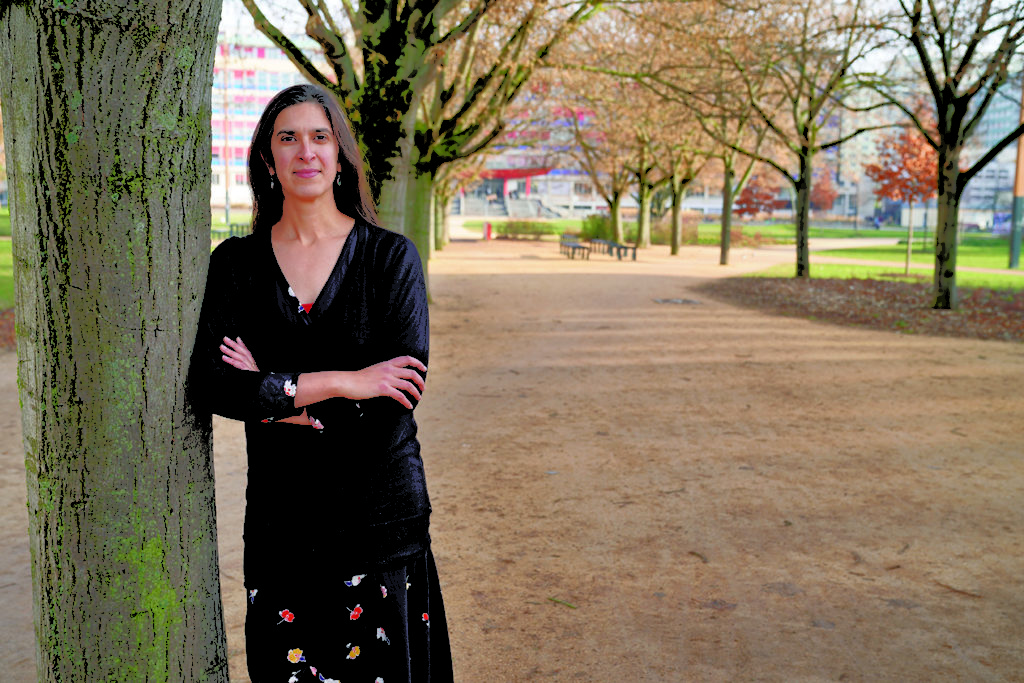
Nalini Anantharaman, a French mathematician from the University of Strasbourg, was recently awarded the Infosys Prize (2018) recognizing her pathbreaking work in quantum chaos and allied areas. A recipient of the Henri Poincaré Prize (2012) and the Salem Prize (2011), she was also an invited plenary speaker at the International Congress of Mathematicians held in Rio de Janeiro in 2018. Born to a French mother and an Indian father, both mathematicians, here she reminisces on her childhood, a nurturing environment at home, and her own journey from being a precocious teenager to becoming a world-renowned mathematician. She also emphasizes why her subject, though centuries old in its founding principles, is still youthful and vigorous, thanks to the many fertile interconnections it shares with other branches of science.
On behalf of Bhāvanā, a heartfelt `thank you’ for speaking to us.
At the outset, we congratulate you on winning the 2018 Infosys Prize for Mathematical Sciences and wish you many more laurels in the days to come.
We learn that your parents are mathematicians too and that your very Indian-sounding name and surname are actually courtesy your father, Anantharaman, a mathematician-turned-theoretical computer scientist. Your mother, Claire Anantharaman-Delaroche, though, is French. How did your parents meet and when?

So you started off with a strong advantage, in the sense that mathematics was to you not at all an abstract subject, but instead was a lively topic of discussion that both your parents perhaps frequently indulged in. You practically inherited mathematics! Did you have a natural intuition for the subject right from the beginning?
NA: I always understood mathematics very well—but the same was also true for other subjects at school. I remember a few notions that I found difficult to grasp at first (conversion of units in physics, for instance), and on these occasions, I asked for explanations from my parents. But generally, I liked to work on my own and did not need much help.
Where did your schooling happen, and were you generally ahead of your class in those years?
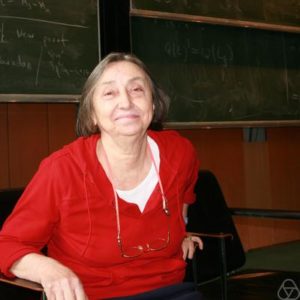
NA: I grew up in Orléans, a city 120 km south of Paris. I was always ahead of my class. In math and sciences, it required almost no effort. In the humanities, though it required a lot of work, I was amongst the best pupils. In physical education, I was always among the worst: I had the experience there of not managing to progress, and having the impression that if one was not born gifted, there was no method that allowed one to improve. I now realise that many students think the same way about math, and I wish that the school system could provide more methods of progression for those who are in difficulty.
Did you compete in school-level math competitions, which typically tend to be platforms where students get noticed for their talent? What were your interests other than mathematics at the time?
NA: I never participated in math competitions. No one suggested it, and I didn’t even know those competitions existed. I’m not sure I would have liked the idea of “training” for such a competition. My favourite pastime was music and I played the piano, and actually once took part in a piano contest in Paris, at the age of eight. But, I was extremely stressed by the whole experience, and so my parents decided that it was perhaps not a good idea for me to pursue it any further. I have good memories of that even now because of the trip to Paris.
What were you planning to do for a career while you were in your teens, and possibly contemplating various options? Was there anything other than math that struck you as an equally interesting possibility during those early formative years? Say, music, or engineering?
NA: I wanted either to be a pianist or a researcher, but not necessarily in math. Physics, and even biology, also fascinated me then.
We have heard from many people who have later gone on to achieve big things in science in their own lives, that the time between 12 and 18 years of age had a huge and positively influential impact on them. Do you feel the same way about your teens too? If so, why?

Nalini Anantharaman
NA: I personally think that the years between 12 and 14 are really difficult years for girls. The body undergoes important transformations, and I don’t think one can go through them in full serenity. I think all of my girl friends at that time also felt the same way. I don’t have good memories of those years, as I think of them as some kind of a trial that I had to go through. Afterwards, it gets much easier as one approaches adulthood. I actually started my undergraduate studies at the age of 16 and moved to Paris. The work there was tough, but that is what I had wanted. The years after that were good years, where I learned a lot of mathematics and physics. I learned to struggle with difficult problems, and I actually liked that struggle. I gained a lot of confidence.
When it was time for undergraduate education and enrollment at a university, did you not plan to go elsewhere other than France? Why?
NA: I was 16. Going to Paris to study was my dream really, and to me, it was the best place ever to study. There was no reason or desire to go elsewhere. Not many parents accept the idea of sending a girl to live and study alone in another city, and that too at the age of 16! I think my parents too were not completely sure that it was a good idea, but I myself had no doubts and managed to convince them.
At the age of 24, while most people are still struggling to get a good research thesis problem formulated, you had already graduated with a Ph.D. Do tell us about how you landed up with your thesis problem, and how you went about tackling it.
NA: I wanted a subject at the crossroads of several branches of mathematics, and this is an inclination that I have always had. I had really liked the ergodic theory course, where J.P. Thouvenot had introduced the basic concepts of ergodic theory and had also shown how these were used in Hillel Furstenberg’s proof of Szemeredi’s theorem in number theory. I also knew from François
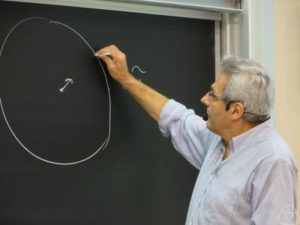
Labourie’s course and the ergodic theory seminar that hyperbolic geometry was deeply related to the dynamics of the so-called “geodesic flow”. I think, around this time, someone advised me to meet François Ledrappier. I didn’t really know at that time that he was a very well-recognised mathematician. He first gave me a bunch of papers to read about random walks on hyperbolic groups. Later on, he asked me to understand a preprint by Dmitry Dolgopyat on the exponential mixing of geodesic flows. He always let me decide by myself the ideas that I wanted to pursue, and the questions I wanted to study. This was rather unsettling at first, but I am very grateful to him for this.
Why did you choose to work with Ledrappier?
NA: Honestly, I met him a little by chance, following the advice of another professor who knew my tastes. I appreciated his modesty and his gentleness from the start.
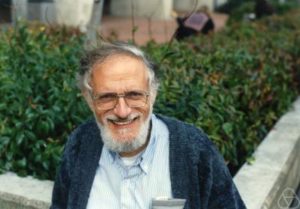
Is it correct to infer that you have always been fascinated by ideas that had a healthy overlap of topics from theoretical physics and pure mathematics? Also, please explain the broad canvas in which your Ph.D. thesis work was positioned.
NA: I liked theoretical physics and studied it together with math while I was an undergraduate. But some visits to an experimental lab convinced me that I actually preferred math. When I looked for a Ph.D. subject, I did not particularly want it to be at the interface with physics, and in fact, it was not. Indeed, my Ph.D. was in the field of dynamical systems, where I worked on understanding the fine topological features of geodesics on negatively curved manifolds. It is only in 2012, when I won the Poincaré prize, that the words “mathematical physics” became attached to my work. I am not always comfortable with this, as I do not have a particular wish to always stay and work at the interface with physics.
The years between 12 and 14 are really difficult years for girls
Your work encompasses ideas from different streams of mathematical knowledge, such as the study of differential equations, differential geometry, and even number theory. From the representative example of a ball bouncing off the walls of a billiards table, can you please motivate the central questions that have held your attention for the past two decades?
NA: Imagine a ball rolling on a billiard table and bouncing off the edges. In the idealised case where there is no friction, this motion will go on forever. This is the epitome of a “dynamical system”. This example seems a little frivolous, but it actually serves as a paradigm for the study of more relevant dynamical systems occurring in nature (the solar system for instance, where the planets could be considered as billiard balls subjected to the gravitational attraction of the Sun). The main questions here that mathematicians have to consider are: Can one solve the equations of motion explicitly, and with the right choice of coordinates? Does the system have a periodic behaviour? Is the motion stable or unstable, and in the latter case, how can one understand chaotic behaviour? Is there a phenomenon of convergence to equilibrium? And so on…
How does the easily relatable example of the dynamics of a billiard ball connect explicitly to geometry? Was Henri Poincaré the first person to provide this subtle dictionary between dynamics and geometry? Broadly speaking, how did this dictionary influence a deeper understanding of dynamics from then on?
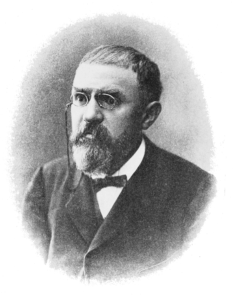
NA: Well, clearly, the motion of the billiard ball depends a lot on the geometry of the billiard table. For a table with a smooth, convex boundary (like a circular billiard table), KAM (Kolmogorov–Arnold–Moser) theory tells us that there are many trajectories that behave in a quasi-periodic way. On the other hand, if the boundary of the billiard table is piecewise concave, the motion is chaotic and becomes highly unpredictable.
Poincaré was one of the first to develop a clear picture of the relation between geometry and dynamics, and it was he who first perceived the mathematical meaning of “chaos” in his work on the three-body problem. He often intertwined physical intuition with mathematical reasoning. Jacques Hadamard and George David Birkhoff’s works are also fundamental in order to understand the interplay between geometry and dynamics.
All the examples you have so far mentioned belong firmly to the world of classical mechanics. But your work is also now known to build a bridge between the worlds of the classical and the quantum. Also, since there is a fundamental distinction between a dynamical system being integrable, versus it being chaotic, can you please elucidate on these subtle, yet hugely important distinctions?
NA: Integrable means that many physical variables are preserved by the dynamics; so that, after a change of coordinates, the other variables (called angle variables) evolve in a quasi-periodic way. In other words, integrable means that the motion is completely explicit and predictable. Circular or rectangular billiards are integrable; the simple pendulum or the two-body problem (one planet gravitating around the Sun) is integrable too.
Chaotic, on the other hand, means that the motion behaves like a random system. This can happen even if the equations of motion are deterministic! If there is even a tiny uncertainty about the knowledge of the initial conditions, one cannot predict the long-term behaviour of the system any better than, say, by actually throwing dice. Counter-intuitive as it may seem, there are simple physical systems, such as the double pendulum, that are chaotic. The three-body problem is chaotic in a certain regime of parameters.
The existence of chaotic behaviour came as a surprise in Poincaré’s work on the three-body problem, at the end of the 19th century. But it was realised little by little that chaotic behaviour is actually quite generic in dynamical systems. Mathematicians developed a theory of chaos all through the 20th century.
The problem of non-integrability appeared to be a crucial one in quantum mechanics from the beginning. In 1913, Bohr formulated his famous “quantisation conditions” to describe the spectrum of the hydrogen atom. The “classical” image of a hydrogen atom is an electron gravitating around the nucleus. This is similar to the two-body problem. Einstein realised that the fact that this is completely integrable is fundamental for Bohr’s conditions.
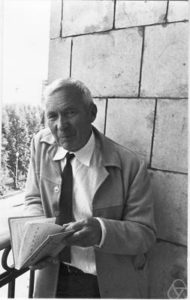
When physicists tried to formulate quantisation conditions for the helium atom (two electrons gravitating around the nucleus), they ran into deep problems due to the fact that the three-body problem is not completely integrable. They read Poincaré’s work on celestial mechanics with the hope that it could be of use for the helium atom, but later realised that it was necessary to start afresh with a new theory. This was the beginning of modern quantum mechanics.
When one looks closely at the idea of quantum chaos, one quickly encounters a rather mysterious-sounding statement here, which declares that “Quantisation commutes with evolution”. What is being meant here?
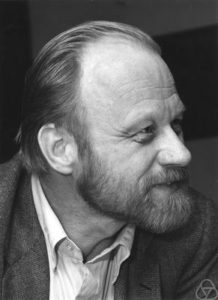
NA: This is a little technical to explain, and in fact, the statement is also not exactly true. It is supposed to mean that you get the same answer if you either start with a classical physical quantity (say, the position of an electron), transform it into a “quantum observable” by the mathematical operation called “quantisation”, and then let it evolve under the laws of quantum mechanics. Or, first, evolve the classical physical quantity under the laws of classical mechanics, and then apply the operation of “quantisation”.
This is only an approximation, and is called the “semi-classical approximation”, valid in a certain regime of parameters: the wavelength of the wave function should be small enough, and the time of observation should not be too long. This is formally equivalent to saying that “the Planck constant h goes to 0”. In this regime, it is almost correct to imagine that waves move according to the classical laws of motion. This is what we commonly do, for instance, when we think of light moving in straight rays, as though it was a particle, completely forgetting its undulatory (quantum) nature. But in other parameter regimes, we observe interference and diffraction, which are actually non-classical phenomena.
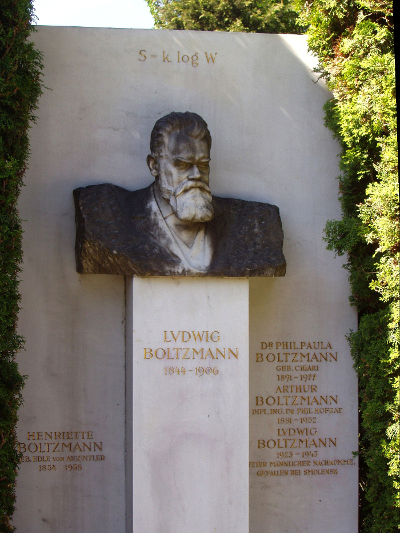
Thinking along the same lines, what are semi-classical measures, and how are they different from invariant measures? What is the simplest way one can understand these two ideas, and why are they even important?
NA: As just explained, the word “semi-classical” stands for a vision of things where the classical and undulatory aspects are mixed. Although we are studying a wave, we use notions from classical mechanics to understand it better, because classical notions are simpler to grasp.
The notion of an invariant measure is absolutely central to the classical theory of dynamical systems and is in fact at the very heart of ergodic theory. An invariant measure is a probability measure on the set of initial conditions, and which remains invariant under time evolution. It is also a potential candidate for the notion of an “equilibrium state” of the system.
In quantum mechanics, there is also a notion of invariant states which are eigenfunctions of the evolution operator. In the semi-classical regime, the quantum invariant states approach classical invariant measures. The latter are called semi-classical measures. In a nutshell, semi-classical measures are a special subclass of invariant measures, those that approximate the quantum invariant states.
You have mentioned the word “ergodic” quite frequently so far. What is the most naturally intuitive notion of ergodicity? And how does this relate to the discussion that we have so far had about the idea of chaotic dynamics?
NA: Ergodic theory studies the evolution of dynamical systems, from the point of view of measure theory, the central object being the notion of an invariant measure. A dynamical system with an invariant measure is said to be ergodic if it is irreducible in the measure-theoretical sense: that is, if it cannot be decomposed into two invariant sub-pieces of positive measure. By Birkhoff’s ergodic theorem, this is equivalent to saying that the time-average of any physical quantity, over a randomly chosen trajectory, coincides with its average over the whole phase space (thus making the crucial connection with Boltzmann’s hypothesis, as in the kinetic theory of gases).
Poincaré perceived the mathematical meaning of “chaos” in his work on the three-body problem
There are not-so-many known techniques to prove ergodicity. Most often, one starts by proving that there is exponential sensitivity to initial conditions. This is the property called “hyperbolicity”, a precise mathematical formulation of the concept of “chaos”—a word which is itself not used as much by mathematicians, except perhaps to please journalists!
In this context, we mention a fundamental question that you discussed in your plenary address at the ICM of 2018, and which also incidentally greatly bothered Albert Einstein himself. Einstein noted that for a classical system that was also ergodic, it was not at all clear how ergodicity at the classical level got “transferred” to the quantised description of the same system. Is there a significant qualitative difference between the ideas of classical and quantum ergodicity? Or, to paraphrase the same, why was Einstein troubled?
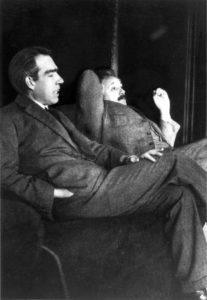
NA: At that time (1917), the description of quantum mechanics was still mostly classical. Niels Bohr started from the classical planetary model of the hydrogen atom and added the axiom that the kinetic momentum should be “quantised”, that is, could only take values in a discrete set. This explained the discrete spectrum of the hydrogen atom, and the next task was to find similar quantisation rules for systems with larger atoms. Einstein found some general quantisation rules for Hamiltonian systems, but he simultaneously noted that these rules also almost implicitly assumed that the system was completely integrable and thus, could not really apply to ergodic systems. It is not clear to me whether he found this question important, or if it was just an incidental remark.
For readers already familiar with the idea of the so-called Arnold’s cat map from classical chaos, what does its quantisation result in, especially seen through the lens of semi-classical measures? What does quantisation primarily lead to, in this context?
NA: To perform the operation of “quantisation”, we first need to consider a symplectic dynamical system on a symplectic manifold. Arnold’s cat map—a linear map on the two-dimensional torus—is a simple example of such a map. To quantise it, we need to build a Hilbert space and a unitary map, whose iteration constitutes the “quantum dynamics”. This also needs to satisfy the principle that “quantisation commutes with evolution” asymptotically in the limit \hbar \to 0. For the cat map, quantisation can be done either via the Weyl formalism (using the fact that the cat map corresponds to the time t=1 of a linear Hamiltonian flow on {\mathbb R}^2, and using the corresponding Schrödinger equation) or by the Berezin–Toeplitz formalism. In both cases, the mathematical object that we get is a unitary matrix acting on a finite-dimensional Hilbert space, whose dimension is N=1/h, and this goes to infinity in the semi-classical limit.
My favourite pastime is playing the piano
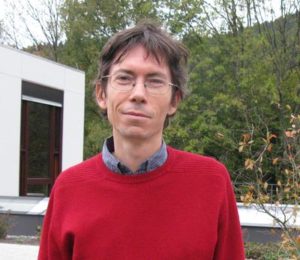
Another major milestone in physics was the introduction of random matrices by Eugene Wigner in order to understand the spectra of heavy nuclei. How has this set of ideas, centred around the idea of a random matrix, influenced the study of localisation and delocalisation of the spectra of Schrödinger operators?
NA: It is believed that one can classify Hamiltonian systems into “universality classes”, families that share a number of common features. The two universality classes that are well-identified are, on the one hand, completely integrable systems, and on the other hand, chaotic systems. In between, there are intermediate classes that are not so well-identified. For completely integrable systems, it is believed that the quantum spectrum should obey a Poissonian statistics and that the eigenfunctions of the Schrödinger operator be localised. For chaotic systems, the quantum spectrum should obey the Wigner statistics, and the eigenfunctions should be delocalised. These ideas formed little by little, by observing specific examples. Unfortunately, we are very far from being able to give rigorous mathematical proofs of these beliefs, and it is also very difficult to study most examples other than through numerical methods.
P.W. Anderson, co-winner of the 1977 Physics Nobel, also lends his name to a physical phenomenon that has held great sway in your own work. How does the idea of localisation fit into the broad theme of ideas that you have presented here?
NA: In my papers with Stéphane Nonnenmacher, where we used the notion of entropy to measure the fact that eigenfunctions of Schrödinger operators have a disordered behaviour, we used the word “delocalisation”. When writing this, I didn’t have in mind any connection with Anderson localisation. Anderson localisation is a property of infinite quantum systems, and the expression refers to the fact that in certain circumstances, the eigenfunctions decay very fast at infinity, and thus are essentially localised in a finite portion of space (meaning that the system is an insulator). In my own work though, I was studying a compact phase space, and by “delocalisation” I meant that the eigenfunctions could not be localised in a tiny portion of phase space, or equivalently, that they possess a very small dimension.

(Right) Nalini Anantharaman responds to winning the Infosys Prize in Mathematical Sciences, 2018. Infosys Science Foundation
It is only recently, after my own work on graphs, that I clearly realised that the two questions could actually fit within a common framework: namely, that in the study of Anderson (de)localisation, one can approximate an infinite system by a sequence of finite systems, each of size n growing to infinity; and this actually constitutes a sort of a semi-classical approximation.
In the study of the Anderson model, one observes that in the universality classes I mentioned before, the localised phase corresponds to Poisson statistics, and the delocalised one corresponds to Wigner statistics. The latter effect is only observed numerically; also, whereas the localised phase is by now well-understood, the delocalised one still resists the efforts of mathematicians.
Nearly 25 years ago in 1994, the mathematicians Zeev Rudnick and Peter Sarnak while working on random matrices, spoke of the role of the so-called strong scars, extending the Harvard physicist Eric Heller’s 1984 idea of quantum scars. What are these scars? And what dynamical role do they have to play in the idea of quantum ergodicity?
NA: Mathematicians and physicists don’t have the same definition of “scars”: for mathematicians, the definition is more precise and also more restrictive. Physicists speak of a scar as soon as they see a wave function that is enhanced in the vicinity of a classical unstable periodic trajectory. This is mostly a visual definition, something you see on pictures coming from numerical simulations. Mathematicians, on the other hand, have a more precise definition (“strong scars”). Having a precise definition is necessary to prove or disprove the very existence of scars: the probability density defined by eigenfunctions should have a positive mass in the vicinity of a periodic orbit, and this should also persist, even in the semi-classical limit.
According to the Shnirelman theorem (or the quantum ergodicity theorem), if the system is classically ergodic, then most eigenfunctions have a uniform distribution over phase space, and hence do not have strong scars. Thus, the scarred eigenfunctions, if they exist, form a sparse family.
According to the quantum unique ergodicity conjecture (still unproven except in the so-called “arithmetic” case), if we are on a negatively curved manifold, then scarred eigenfunctions should be absent; in fact, the conjecture predicts that the full family of eigenfunctions becomes uniformly distributed over phase space in the semi-classical limit.
Your interests have also encompassed ideas from graphs and networks. What is the motive to look into these applications? Do you see interesting and profitable analogies here between the worlds of the continuous and the discrete?
NA: The motivation was mostly theoretical and came through discussions with colleagues. Working with discrete models is not necessarily simpler than with continuous models, but the change of perspectives brings in a lot of new ideas, especially with the possibility of working with random geometric models.
Mathematicians and physicists don’t have the same definition of “scars”
We note with interest that the ideas of expanders and Ramanujan graphs have held your attention of late. Is that because it naturally fits into the broad area of work that you have done so far? Also, what are your views on Ramanujan graphs, especially from the viewpoint of localisation?
NA: Ramanujan graphs are at the crossroads of several streams of ideas, related to number theory, graph theory, probability, etc. They are optimal graphs in terms of the rate of mixing of the simple random walk, and I believe that they should also have optimal properties in terms of the delocalisation of eigenfunctions.
Still on graphs and drawing an analogy with flows on a manifold, is it profitable to look at non-backtracking random walks on a graph, as though they were discrete analogues of non-periodic/ergodic flows on a manifold?
NA: Non-backtracking paths on a graph may be thought of as local geodesics, so a non-backtracking random walk may be seen as a discrete analogue of a geodesic flow. It can also be used to define a kind of discrete analogue of the wave equation.
Research in mathematics, especially at the cutting edge where you operate, can be hugely exhausting and emotionally draining as well. How then, do you recharge yourself? Does spending time with family help? Do you read books outside of mathematics, or perhaps have an interest in theatre? Also, does the piano still hold any charm for you?
NA: I must say that administration is taking more and more of my time away from math, and so I don’t really need any distraction from research at all. My favourite pastime is playing the piano, i.e, western classical music. I have actually never stopped practising since I was 7, except at the birth of my son. Even now, I am trying to find more time for it. I mostly like the German composers from the 19th century, and Beethoven above all. I do read a lot, and nowadays actually enjoy sculpting clay, more and more.
That was a truly fascinating walk that you led us through, and also via some very picturesque semi-classical lanes of classical and quantum mechanics. Also, you may note with some interest that our own magazine’s motif is actually an artistic interpretation of a Ramanujan graph, suitably Indianised. Prof. Nalini Anantharaman, it was an immense pleasure talking to you, and we wish you many more years of deep and productive research.\blacksquare
